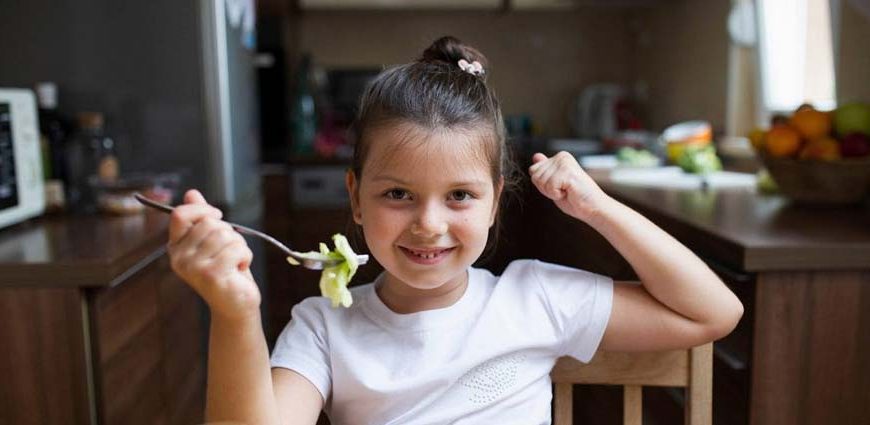Ruchi Shah is worried. She comes from a Gujarati family that is staunchly vegetarian. Of late, she has heard from several of her friends that eating a strictly ‘vegetarian’ diet will not help Rahul, her precious son, get all the necessary nutrients. The nutrients that are most important for the development of her son. Not forgetting to mention, of course, the one that’s the talk of the town these days – Protein!
Ruchi is not alone. She belongs to a large tribe of people, who are seemingly in the dark as to how to get their children their daily ‘Protein Fix’ from strictly plant-based sources. Luckily for Ruchi and for anyone who might be reading this article, in this blog post we have curated for you a list of Ten Protein-Rich Vegetarian Foods for Children. From Organic Oats to Dry Fruits and even Cereal Soya, you will be amazed at the diversity of food items, that constitute a Protein Rich Vegetarian Diet.
Oh, and in case we haven’t already answered the question, ‘Can a Vegetarian Diet provide our children with all the essential nutrients they need for healthy development’, rest assured that ‘Yes, It most certainly can!’
Unlocking a Protein Rich Vegetarian Diet: Ten Protein Rich Vegetarian Foods for Children
In case you have ever found yourself asking the question, ‘What Are Protein Rich Vegetarian Foods?’, you will find the answer here. Presenting our list of Top 10 Protein Rich Vegetarian Foods for Children.
- Mushrooms
- Organic Oats
- Quinoa
- Greek Yogurt
- Cereal Soya
- Chickpeas
- Dry Fruits
- Cottage Cheese
- Broccoli
- Lentils
Children love playing in the wild and searching for Mushrooms, but believe us when we tell you they will love ‘eating’ them, too!
Cool Facts: Did you know, mushrooms contain around ‘twice’ the amount of protein that’s found in other veggies? To be precise, a cup of sliced white mushrooms has around 2 grams of Protein.
Oats is the ‘Breakfast of Champions’, they say! What better breakfast to give our little champions?
Cool Facts: A mere half-cup of oats, is packed with 6 grams of protein. If your baby is in the initial stages of starting solid food, this makes it a better choice than Wheat or Rice for them. Moreover, it doesn’t take all that much time to cook, and goes extremely well with fruits and vegetables.
If they don’t eat Rice, let them have Quinoa!
Cool Facts: Once again, Quinoa has more protein than the other grains that are commonly consumed in most households. There is roughly around 8 grams of protein, in a single cup of quinoa. What’s more, it is packed with tons of fiber! In case you’re the kind of parent that doesn’t like giving your child all that ‘starchy’ pasta, this food’s a great option.
After Frozen Yogurt lost its popularity, along came Greek Yogurt! Needless to say, this one’s a food that’s here to stay.
Cool Facts: Your children will love eating Greek Yogurt straight from the container! If they don’t, don’t worry. It can be added to delicious Smoothies, and even paired with Granola to whip up a delicious Parfait. Oh, and a cup of Greek yogurt has a whopping 23 grams of Protein!
Soya is something you see more of nowadays, just about everywhere. From ‘mock meat’ to the Soya Milk option at your local Starbucks, it’s quite the sensation!
Cool Facts: A mere 100 grams of Soya Beans, comes with around 36 grams of Protein! It’s interesting to note, that these soya beans constitute a ‘Whole’ source of protein, including all essential amino acids. Want to give them a protein-packed breakfast? Give them some Banana Soya Cereal!
This one’s more commonly known to us by the delicious recipe made from it. Namely, good old ‘Hummus’!
Cool Facts: Hummus might seem like an exotic food, but in reality, the Chickpeas that it is made from, are not at all expensive. Furthermore, 23 percent of their nutritional content is Protein! Additionally, they are low in fat, which is another reason you want to add them to your child’s diet. Tip: Add them fresh to a salad, if your child doesn’t like hummus!
You cannot live in an Indian household, and not have Dry Fruits in the kitchen!
Cool Facts: What better way to give our kids their daily requirement of Protein, than to have them ‘Go Nuts’? Take 50 grams of Pistachios, for instance. They are packed with 10 grams of Protein. Besides, an assortment of Dry Fruits will only ensure that your child gets something ‘deliciously different’, with each handful.
This one we most definitely know better as ‘Paneer.’ A food that’s loved alike, by vegetarians and meat eaters!
Cool Facts: The best thing about Paneer, lies in its versatility when whipping up tasty treats for your kids. Whether it’s Paneer Parathas or Paneer Makhani, there’s loads of ways to get your child to eat Paneer. Oh, and a mere half-cup of Paneer, contains around 150 grams of Protein!
The cool shape of this Wonder Veggie, is probably the very thing that’s going to get your child to eat it.
Cool Facts: 100 grams of Broccoli, contains close to 3 grams of Protein. Apart from this, Broccoli is laced with fiber and antioxidants. If your child is averse to eating it steamed or stir-fried, no problem! You can mix it with some quinoa or perhaps even brown rice, and serve it to them.
Barely a day goes by, that an Indian meal is served without a side of lentils. Oh, that’s the English word for the ‘Dal’ we have all grown up loving!
Cool Facts: Did you know that a single cup of ‘Dal’ contains around 18 grams of Protein? Besides being packed with protein, lentils are also great for gut bacteria health. There’s nothing like good old Moong Dal Khichadi on a rainy day, to make for the perfect comfort food for your little one.
For more such interesting blogs, visit EuroKids!














